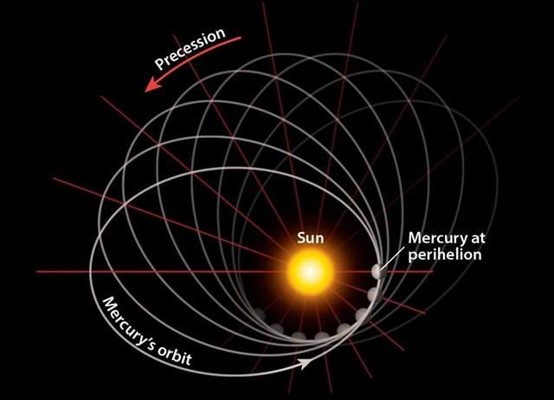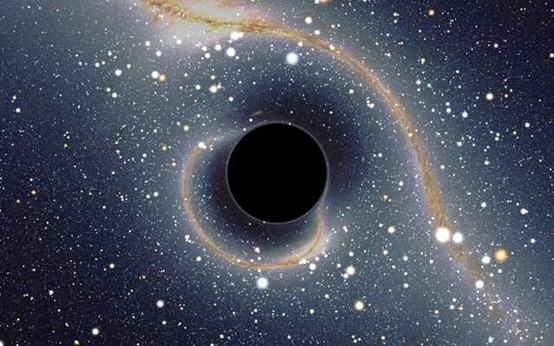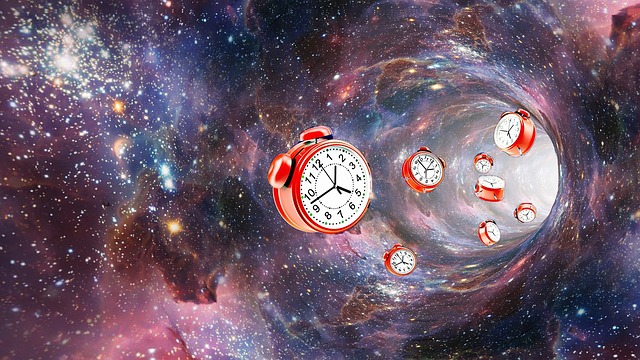Today we will systematically talk about general relativity, starting from the most basic principles, to thoroughly help you understand why space-time is curved.
Gravitation is the most basic phenomenon in the universe. Any two objects will attract each other. Whether the apple lands or the moon rotates around the earth, or the earth rotates around the sun, gravity will force objects closer together. Many people may think that gravity is determined by the mass of an object. The greater the mass, the greater the attraction. Newton’s theory can certainly understand this way because Newton’s mechanics can well calculate the time when an apple lands and the data of the planet’s revolution around the sun.
But in fact, gravity is not a real force. For example, suppose a satellite is going to fall to the ground. If gravity is a force, then the satellite should fall to the center of the earth. But the real situation is that when the satellite falls to the ground, its trajectory will deviate from the rotation direction of the earth.
Another example is that Mercury’s orbit around the sun will change direction at a certain speed over time. If gravity is a force, then we can predict the deviation of the moving orbit with great accuracy. But Newton’s law of gravity can’t calculate the orbit deviation of Mercury very well.

Now imagine a space in which there are no galaxies for more than ten light years, so we can ignore the “gravitational” interference of other galaxies.
At this time, you are in an airtight box with a small ball in your hand. At this moment, you are in weightlessness. If you release the ball in your hand, you will see the ball floating in place.
Then a propeller at the bottom of the box ignites, and the whole box moves “up” with a constant acceleration a. At this time, you will feel a force at the bottom of the box pulling you down, and the ball will also fall to the bottom of the box at a constant acceleration. If the value of this constant acceleration is 9.81m/s ², Then you will feel the same effect as the earth’s surface in an airtight box.
You will feel that the bottom of the box is pulling you, and this “pull” is the same size as the earth’s surface. You can also see that the acceleration of the ball falling to the bottom of the box is the same as that of the ground. So you can’t tell whether you are standing still on the ground or in space at 9.81m/s ² The acceleration motion of.
If you are in the box, you may think that you are standing on the ground at rest, so you are attracted by the “gravity” of the earth.
But in the eyes of the observer outside the box, you and the ball are not moving, the box is not on the earth, and it will not be attracted by the gravity from the earth, but the bottom of the box “moves up” with constant acceleration and hits you and the ball.
Now we turn off the engine at the bottom of the box, and you are in weightlessness again!
At this time, you take a flashlight. When you turn on the flashlight, the engine starts again. At first, you shine the light on the center point on the right side of the box.
But because there is an acceleration at the bottom of the box, you can finally see that the light will fall below the center point on the right side of the box. So the light you see is curved.
At the same time, there is also a person outside the box to observe your behavior. In the eyes of the person outside the box, the light is not bent, but the bottom of the box approaches the light with a constant acceleration.
So whether the person in the box is correct or what the person outside the box sees is correct.
General relativity holds that the people inside the box and the people outside the box are correct.
Driven by the box engine, the people in the box will think they are standing on the surface of the earth. The people outside the box will think that the people in the box were fooled by the acceleration at the bottom, so they mistakenly thought they were attracted by the earth.
Looking back, we can’t tell whether the free fall of an object is caused by gravity or acceleration. So gravity can be equivalent to acceleration. The greater the mass of a star, the greater the acceleration is equivalent to its gravity.

Just now we said that the light seen by people in the box moving at a constant acceleration in the deep space of the universe is curved
The people outside the box saw that the light inside was straight.
When observing the same light, people inside and outside the box will get different results. Obviously, the light observed by the people in the box is bent, and the path of light becomes longer.
According to the principle of constant speed of light, the speed of light measured outside the box is the same as that measured inside the box. The people in the box obviously felt the light getting longer. We know that time is equal to the path of light divided by the speed of light. Since the speed of light is unchanged, the light path in the box becomes longer, so the time in the box becomes longer.
So the time inside the box is slower than that outside the box. As mentioned earlier, the greater the mass of the planet, the greater the equivalent acceleration.

This is why the greater the mass of a celestial body, the slower the time around it.
An apple originally moves at a constant speed along a straight line in space. When it moves around the earth, it is attracted by the earth. At this time, we can equate the gravity of the earth with the acceleration of the apple. Because of the acceleration, the apple originally moves at a constant speed in a straight line and becomes a curve. You can also think that the apple still moves along the original path after being accelerated, but the earth has warped the surrounding space-time, so the apple has to move in the curved space-time, which is curved.
In order to unify the calculation, general relativity generally does not distinguish between the equivalence of gravity and acceleration, but directly says that a mass object will bend the surrounding space-time, which is actually equivalent to the curvilinear motion caused by acceleration.
The higher the mass of an object, the greater its equivalent acceleration. Therefore, the more curved the trajectory of the objects around it, the greater the path extension, and the slower the time.
But it is troublesome to say this. It is better to say that the more massive the celestial body is, the more curved the surrounding space and time will be. The more curved space and time are, the longer the path is, and the longer the time is.
Space and space can be called space-time for short. Therefore, we often hear that the greater the mass of the celestial body, the more curved the space-time, and the slower the time. The destiny of the most massive celestial body in the universe will inevitably become a black hole, so we often say that time outside the event horizon of a black hole passes slowly.

In fact, the surrounding time of any massive celestial body is very slow relative to the Earth, but once the mass of the star breaks through the Schwarzschild limit, it will inevitably become a black hole, so black holes are now the pronoun of time slowing down!


